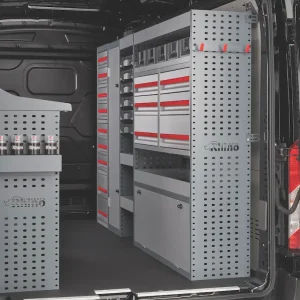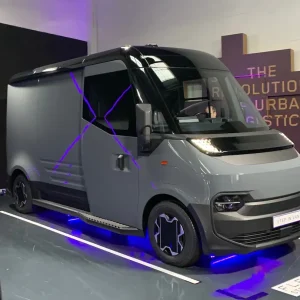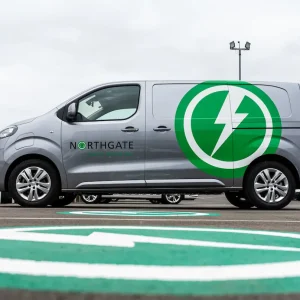Efficient engines and an innovative cabin designed to be used as a mobile workspace are two of the headline features of the new Renault Trafic and its UK-built sibling, Vauxhall Vivaro.
As with the previous partnership between Renault and the GM-owned Vauxhall and its European arm Opel, the main difference between the sister vans is the nose, with Vauxhall and Renault both employing the family face already seen on various models. That’s probably more the case with the Trafic, which takes the bold Renault badge-dominated nose, as previously seen on the passenger car Clio, Captur and revised Megane models.
Available as a panel van, combi, double-cab or platform cab, the new vans go on sale in the UK this autumn, and a new 1.6-litre engine will boast what the partner firms claim is best-in-class fuel economy. Available in single-turbo 90 and 115hp form, or with 120 and 140hp as a twin-turbo unit, the latter alternative will prove most efficient with an official consumption figure of 49.5mpg and CO2 emissions of 149g/km. The Twin Turbo, as Renault calls it, or Bi-Turbo in Vauxhall parlance, is also designed to provide peak torque low-down the rev range, giving good performance without having to hold onto gears. The unit is 25kg lighter than the 2.0-litre diesel it replaces, which helps both efficiency and payload.
The cabin contains some clever new innovations, though it’s not yet clear how many of these will be optional extras, as well as a claimed 90 litres of storage space across 14 different compartments and cubbyholes, almost than half of which is the 42 litres of space underneath the passenger seat. There are also spaces for 1.5-litre and 500ml drinks bottles, and optional dashboard mountings for phone and tablet devices, as well as a centre passenger seat that folds down to provide a secure clipboard angles at either driver or passenger. The mirrors have been redesigned to provide greater visibility, and there is the addition of a reversing camera with screen either in the optional satnav screen or mounted in the rear-view mirror.
Other technology available for the first time includes keyless entry, and a Renault spokeswoman said detailed surveys of customers found they were always on the road and always wanted to be connected.
A particularly simple and clever addition is that the passenger’s sun visor mirror has a concave element to it that allows the driver to see into the blind-spot created by not being able to look over-the-shoulder at angled junctions.
The load area will take three europallets in the short-wheelbase form thanks to the load area being 100mm longer than the predecessors, and the short-wheelbase now has a 2.5-metre load length, with an extra 400mm for the long-wheelbase variant.
Load space now range from 5.2m3 to 8.6m3 for the higher of two roof alternatives, and the new Trafic and Vivaro have the same cross-section, so existing modifications, which range from ambulances and refrigeration units through to racking, can be moved from an old Trafic or Vivaro to the new one.
An optional two-metre long and 25cm wide rack can be fitted to the interior roof, suitable for carrying ladders or pipe up to 13kg.
Renault and Vauxhall has followed Ford’s lead with the Transit Custom, and gone one better, with the addition of a pair of load-through hatches that enable piping or such long thin loads to be fed through the bulkhead, under the passenger seat and out the other side into the passenger footwell. It means a class-leading maximum load length of 3.75 metres on the shorter body and 4.15 metres for the long wheelbase model, with the first hatch beneath the set adding 410mm, and encroaching into the footwell offering an additional 800mm.
The left-hand rear door can be closed and latched independently of the right, which means even longer loads can poke out of the end of the vehicle if the right-hand door is secured, but the number plate would still be showing.
More detail on pricing, specification and option is expected by early summer, ahead of first vans appearing on the road around September.





